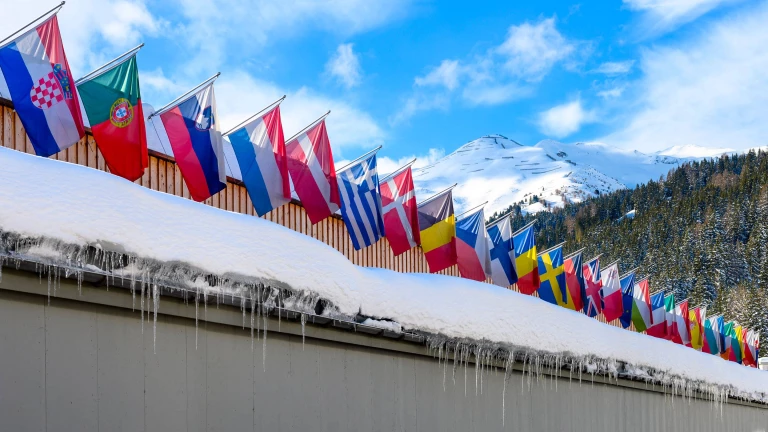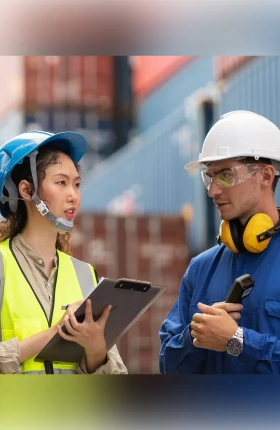Public and private sector leaders are gathering at the World Economic Forum’s Annual Meeting in Davos against a backdrop of geopolitical fractures. Conflicts in the Middle East and Ukraine are front of mind alongside climate change, macroeconomics and the advance of AI.
To navigate this increasingly complex environment, leaders must adapt to these 9 forces reshaping business:
1. Conflict in Ukraine and Middle East
The frontline in the war in Ukraine has remained static in the last year. No ceasefire negotiations are in sight, especially with elections coming up in Russia and potentially Ukraine. There are some signs of eroding support among foreign governments on both sides of the Atlantic for financial support for Ukraine. For Ukraine to join the EU, the bloc would have to provide €186 billion over seven years to support Ukraine, creating a significant burden for some member countries. Even without membership, reconstruction efforts are expected to cost around $1 trillion.
Since 7th of October, tensions in the Middle East have been high, with global attention focused on the war in Gaza. Recent developments in Lebanon and the Red Sea have heightened concerns for broader regional conflict and disruption.
2. Higher interest rates
Even though inflation is showing signs of cooling in the US and EU, it’s uncertain when central bankers will significantly reduce rates. Recent high rates have raised hurdles for capital investments and reduced M&A, private equity, and venture capital activity. Businesses should not expect a return to “cheap capital” in the near term. On the positive side, interest rates remain modest in some nations. And unlike previously, higher US rates haven’t triggered systemic debt crises in emerging markets.
3. China dynamics
Geopolitical tensions, shifting government policies, a slowing economy, and concerns over supply-chain resilience have complicated China’s business environment. Even assuming a slower growth rate of around 3%, however, China’s GDP in 2030 is projected to be around $5 trillion greater than in 2022. That would surpass the expected economic growth of the EU, the Association of Southeast Asian Nations (ASEAN), South Korea and Japan combined. However, Chinese markets have unique needs and regulations, and domestic competition is fierce. Companies need to carefully consider the role China will play in their portfolios.
4. Election Year 2024
Voters in nations accounting for more than half the world’s population will go to the polls to elect leaders. The impacts will be far-reaching. For example, the results could change climate change policies in Indonesia or impact location decisions of foreign manufacturers in Mexico. New leadership in the US could result in major changes in foreign, economic, and climate policy. Parliamentary elections in the EU may impact the bloc’s net-zero commitments.
5. Asia’s Economic Acceleration
Asia, the most economically integrated region aside from Europe, is well positioned for growth. BCG’s Global Trade model projects that over the coming decade, India’s and ASEAN’s trade will grow by 6.3% and 4.1% per year, compared with global trade growth of 2.8%. These trends result from growing domestic markets, shifting cost structures, and a desire for increased supply chain resilience. Both of these markets are attractive investment locations for companies diversifying manufacturing footprints and supply chains beyond a China base.
6. The Geopolitics of AI
The massive expansion in the capability and use of AI is fueling a race for global supremacy. At the same time, different regulatory approaches are emerging. For example, the EU is prioritizing a centralized, risk-based approach covering consumer protection and product safety, while the US is taking a more decentralized approach, focusing on national security. Navigating an increasing patchwork of AI regulations across borders will be challenging for global companies as they work with regulators to ensure effective safeguards while also leaving room for innovation.
7. The Rise of (Green) Industrial Policy
Governments are taking increasingly bold action to develop low-carbon industries to fight climate change, strengthen domestic manufacturing, and reduce reliance on offshore suppliers of components and critical minerals. There is significant money on the table. Through the Inflation Reduction Act, for example, the US is investing $370 billion in clean energy and decarbonizing industries. The EU’s Green Deal Industrial Plan dedicates €357 billion through 2030 to support the green transition with state funding and broader funding support for environmental targets on top of that, according to analysis from BCG’s Center for Climate & Sustainability and Policy & Regulation . These policies are influencing company decisions as they seek to remain “carbon competitive”. And since there are often conditions attached, such policies will likely reshape global supply chains .
8. BRICS Expansion
In 2023, the BRICS group of high-growth emerging markets—Brazil, Russia, India, China and South Africa—expanded to include Saudi Arabia, Egypt, the United Arab Emirates, Iran, and Ethiopia. This has led to incremental increases in share of global GDP and population and means the BRICS+ countries now control 43% of global oil production. BRICS+ also announced plans to establish institutions such as a new development bank. If these institutions take shape and exert influence, they could offer an interesting counterbalance to the West.
9. The Race for Global Talent
Entrepreneurs, engineers, and researchers are fast becoming new geostrategic assets that fuel countries’ ambitions to reach AI leadership, shore up tax bases, and drive green industrial policy. Many nations are now trying to both contain irregular migration movements while actively attracting top talent . Major reforms are underway in Australia, Germany and the Middle East. In 2024 and beyond, countries, cities and firms will need to develop new value propositions to attract talent and ensure they have the capabilities, to thrive in a fragmented world.






